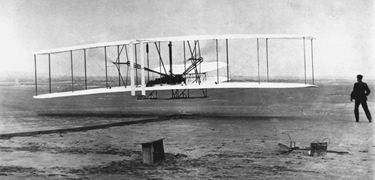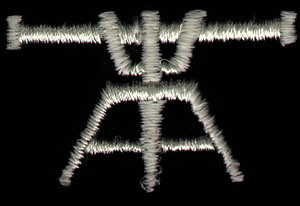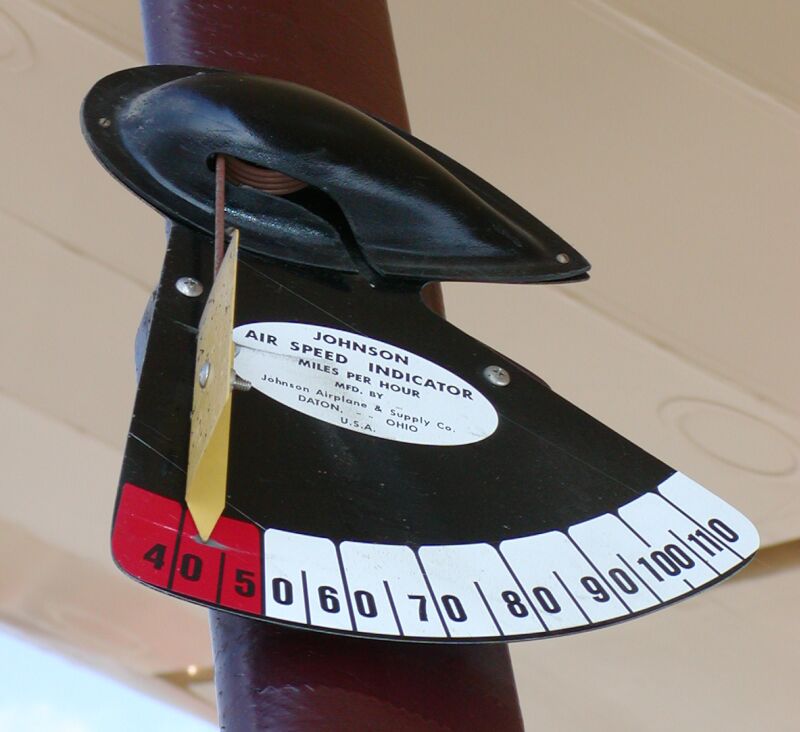

 The Accurate Reloading Forums
The Accurate Reloading Forums  THE ACCURATE RELOADING.COM FORUMS
THE ACCURATE RELOADING.COM FORUMS  Other Topics
Other Topics  Aviation
Aviation  NWA has similiar problem as AF with A 330
NWA has similiar problem as AF with A 330Go  | New  | Find  | Notify  | Tools  | Reply  |  |
| One of Us |
Airbus is still trying to kill us... http://online.wsj.com/article/...607165106964441.html A Northwest Airlines jet traveling from Hong Kong to Tokyo last Tuesday suffered a series of equipment and computer malfunctions strikingly similar to those encountered by Air France Flight 447 just before it crashed into the Atlantic Ocean on May 31. The Northwest plane and its passengers, however, emerged unscathed. Details of the harrowing incident – described in a memo by one of the Northwest pilots and confirmed Friday by others familiar with the matter – highlight how cockpit crews can safely cope with something that is almost never supposed to happen: a system breakdown that prevented the crew from knowing how fast the plane was flying. During the brief but dramatic event, the Northwest Airbus A330's crew was left without reliable speed measurements for three minutes. In addition, the computer safeguards designed to keep the aircraft from flying dangerously too fast or too slow were also impaired. Like the Air France A330 jetliner, the Northwest plane entered a storm and quickly started showing erroneous and unreliable airspeed readings. The National Transportation Safety Board is interviewing the pilots, collecting weather information and analyzing data downloaded from the aircraft's flight recorder. Investigators are examining why certain models of external airspeed sensors on Airbus aircraft are prone to icing. Northwest and other airlines have accelerated replacement of some of the devices. The Northwest Airlines scare also highlights a broader aviation hazard: Pilots depend on computer systems to navigate and control today's advanced jetliners. When these systems break down, most pilots have little hands-on experience relying on rudimentary back-up instruments. Recent crashes and incidents underscore that "pilots don't just need to understand automation," they also must recognize "how it fails and how to deal with that," says Bill Voss, head of the Flight Safety Foundation. "Some of these situations don't have checklists and plans," he says, yet aviators must "have a way to cope." According to the memo written by one of the crew, the twin-engine Northwest jet was cruising at 39,000 feet when it "approached a large area of rain below us." The plane's weather radar indicated only light precipitation or perhaps ice crystals straight ahead. The memo recounts how pilots were surprised to see substantial rain "streaming up the windshield" at that altitude and "the sound of the plane getting pelted like an aluminum garage door." In the course of five seconds, according to the memo, airspeed indicators for both the captain and copilot showed a huge rollback in the plane's forward velocity. The standby indicator also rolled back. With autopilot and automatic-throttle controls disengaged, the cockpit was filled with beeps and bright warning signals indicating various system malfunctions. According to the Northwest crewmember's account, the captain "hand flew the plane on the shortest vector out of the rain." Airspeed indicators continued to waver, but the crew maintained the recommended steady engine settings. Once the airspeed indicators resumed functioning, "we were within 5 knots of our desired speed," according to the memo. "I think it could have been much worse," the memo writer concluded. On Friday, A spokeswoman for Delta Air Lines said its Northwest unit is cooperating with the NTSB. Delta currently is installing new airspeed sensors, known as pitot tubes, on its A330 fleet and expects to complete the work soon. The spokeswoman declined to say if the aircraft involved in Tuesday's incident has the replacement devices. "Our flight crews have the correct procedures to operate the aircraft manually in the event of an unreliable airspeed indication," the spokeswoman said. The Northwest pilot wrote that his flight-control computers never returned to normal during the rest of the flight to Tokyo's Narita airport. Coping with computer problems is part of routine pilot training. But "pilots only occasionally have the chance to practice" flying a plane with major computer systems down, says John Goglia, a former NTSB member. Part of the reason is because airlines want to reduce training costs by limiting the amount of time pilots practice in simulators. "There is definitely a gap there" that should be a safety concern, Mr. Goglia says. —Susan Carey contributed to this article. | ||
|
one of us |
Actually, this is one of two seperate incidents with the A330 A/C: NTSB investigating two A330 incidents with echoes of AF447 Monday June 29, 2009 Related Microsites Stay ahead with the latest aviation & MRO industry news : Delta TechOps Providing comprehensive maintenance, training & support services to aircraft operators : Delta TechOps More Related Links » The US National Transportation Safety Board last week said it is investigating two recent incidents involving A330s operated by TAM and Northwest Airlines in which the airspeed and altitude indications "may have malfunctioned." NWA is a unit of Delta Air Lines. Both aircraft landed safely. Such malfunctions are suspected in the May 31 loss of an Air France A330-200 (ATWOnline, June 10). NTSB said the TAM incident took place on May 21 while Flight 8091 was en route from Miami to Sao Paulo. "Initial reports indicate that the flight crew noted an abrupt drop in indicated outside air temperature, followed by the loss of the Air Data Reference System and disconnections of the autopilot and autothrust, along with the loss of speed and altitude information," the board stated. It said the flight crew used backup instruments and primary data was restored in about 5 min. The flight landed at Sao Paulo with no further incident and there were no injuries or damage to the aircraft. NTSB said it also became aware of "another possibly similar incident" that occurred on June 23 and involved an NWA aircraft flying between Hong Kong and Tokyo. Separately, ATWOnline received what purportedly is a first-hand account of the NWA event, although this website was unable to confirm its authenticity. According to this account, the incident took place at approximately 39,000 ft. around 10 a.m. local time as the aircraft was entering Japanese airspace. Weather was described as mostly clear with occasional isolated areas of rain and cloud tops at about 41,000 ft. Outside air temperature was put at -50C, TAT -21C. As the A330 followed other aircraft in trail, weather radar indicated a large area of heavy rain at a lower altitude. The radar showed light precipitation at the A330's altitude, which the crew took to be ice crystals. The aircraft entered the cloud tops and experienced light to moderate turbulence. After about 15 sec. it encountered moderate rain that was visible on the windshield. The pilots noted that the cockpit suddenly became very warm and humid and a few seconds later all three airspeed indicators rolled back to 60 kt. and autopilots and autothrottles disengaged, as did rudder limit protection. "The Master Warning and Master Caution flashed," accompanied by "the sound of chirps and clicks letting us know these things were happening." At this point the captain hand-flew the aircraft on the shortest vector out of the rain at "the recommended 83%N1 power setting." Airspeed indicators returned briefly but failed again. The failure lasted for 3 min. All instrumentation eventually returned to normal but the aircraft remained in Airbus "alternate law" for the remainder of the flight. <>-<>-<>-<>-<>-<>-<>- Probably all I better say at this point but will post up more as and if anything further is released. Lord, give me patience 'cuz if you give me strength I'll need bail money!! 'TrapperP' | |||
|
| One of Us |
Let me be first to recite the mantra: "If it ain't Boeing, I ain't going!" AD If I provoke you into thinking then I've done my good deed for the day! Those who manage to provoke themselves into other activities have only themselves to blame. *We Band of 45-70er's* 35 year Life Member of the NRA NRA Life Member since 1984 | |||
|
| one of us |
Is this the same airframe/systems they plan to use as the basis for the USAF tankers for the future? Don't limit your challenges . . . Challenge your limits | |||
|
one of us |
The Northrop Grumman/EADS KC-45 was a proposed aerial refueling tanker aircraft based on the Airbus A330 MRTT (KC-30), a derivative of the civil A330-200. The United States Air Force had ordered 179 KC-45As in the first stage of replacing the aging KC-135 tankers currently in service. However, the contest was reopened in July 2008, after Boeing's protest of the award was upheld. In September 2008, the KC-X solicitation was canceled.[1] Lord, give me patience 'cuz if you give me strength I'll need bail money!! 'TrapperP' | |||
|
| One of Us |
I'm returning from AMS to DET on August 14th in one of those damned things, and I'm not happy about it. I'm flying Northworst, so it could even be the same aircraft. Where the hell is the AD that should be issued on this bucket of bolts? | |||
|
| one of us |
When it comes to the 787 you won't be going - period! | |||
|
| Moderator |
Here is the retrofit indicator:  for every hour in front of the computer you should have 3 hours outside | |||
|
| One of Us |
The apparent problem is with a French manufactured airspeed indicator. Two ddifferent versions were tried and both have similar problems. When the compter senses a loss of airspeed the plane bgeins a nose down attitude to avoid a stall. The fix is a US made airspeed indicator and most, if not all, US airlines have made the change Jim | |||
|
| Powered by Social Strata |
| Please Wait. Your request is being processed... |
|
 The Accurate Reloading Forums
The Accurate Reloading Forums  THE ACCURATE RELOADING.COM FORUMS
THE ACCURATE RELOADING.COM FORUMS  Other Topics
Other Topics  Aviation
Aviation  NWA has similiar problem as AF with A 330
NWA has similiar problem as AF with A 330

Visit our on-line store for AR Memorabilia

